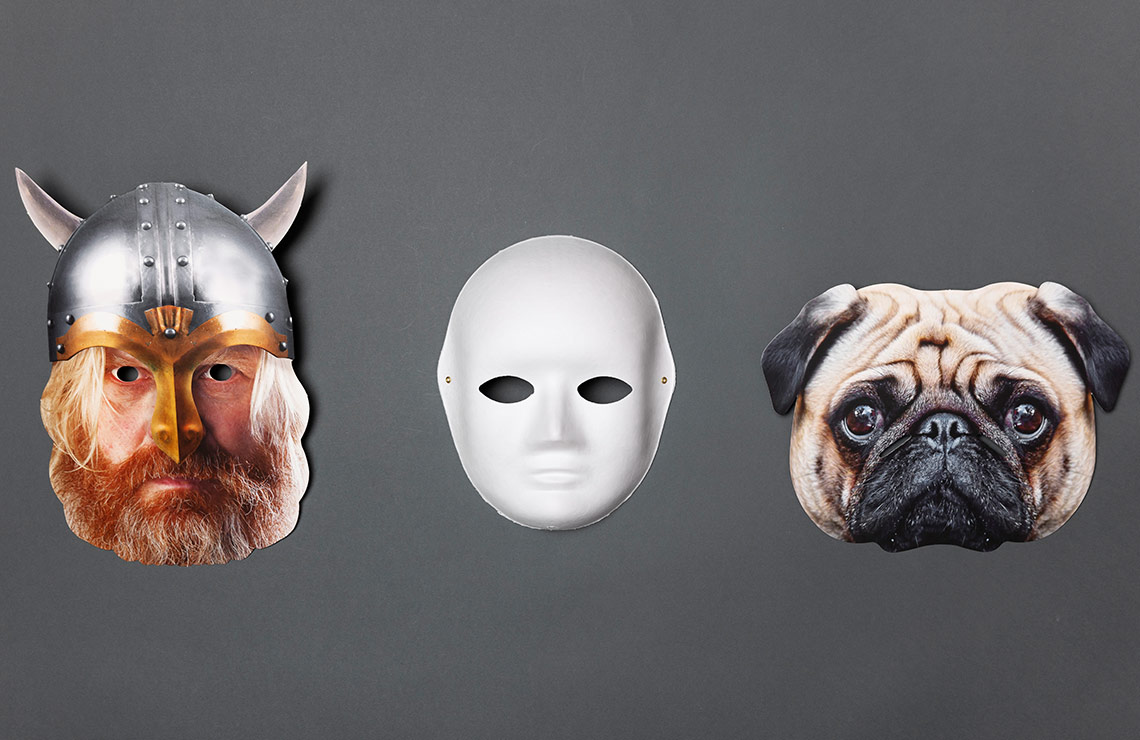Redefining our digital lives
The metaverse is a term that defines the optimism and hubris of the tech industry today. Will this utopic vision for the future of the internet usher us into brave new virtual worlds, or will it fall by the wayside as Meta’s last-ditch effort to save their business?
Few topics in the tech world are attracting such unbridled optimism and derisive scepticism as the metaverse, with, perhaps, the exception of NFTs. And this year, Meta and countless other tech companies have doubled down on reorienting their businesses towards building “the next chapter of the internet.” Around the world, executives and the consultants they hire took note, with one of McKinsey’s forecasts topping out at a staggering USD 5 trillion valuation for the metaverse by 2030.
Countless definitions
But what are we actually talking about when we refer to the metaverse? Countless definitions have been written this year, and they generally follow a similar recipe to this one offered by Gartner: the metaverse is a “persistent, immersive and all-encompassing joining of our physical and digital lives, bringing together work, entertainment, marketplaces and social spaces in one seamless experience.”
In practical terms, this definition relies heavily on rapidly improving extended reality (XR) technologies like virtual reality (VR), augmented reality (AR) and ambient computing (voice assistants and home automation).
While this definition may still be somewhat vague, the idea behind it isn’t new. The term itself was coined by Neal Stephenson in his 1992 novel Snow Crash. Stephenson describes a dystopian future in which the only escape from failed states and corporate warfare is to strap on a headset and dive into a three-dimensional digital world complete with personalised avatars, virtual real estate, transportation networks and nightclubs.

Epic Games’ Fortnite is a traditional computer game that has successfully integrated purchases of virtual goods.
A profound cultural impact
Stephenson’s concept builds on the cyberpunk traditions established in works like William Gibson’s novel Neuromancer, which popularised the term Cyberspace and imagined a virtual reality environment he called “the Matrix”. The cyberpunk genre of science-fiction has had profound cultural impact, not least of which is a long line of dystopian films, a surprising number of which star Keanu Reeves.
The people who read books like Snow Crash and Neuromancer as teenagers grew up to found global tech companies. But they focused on an escapist, tech-utopic vision of the metaverse, leaving aside the critique of unbridled capitalism and technocratic rule that defines the cyberpunk genre. While these contemporary visions of the metaverse should be viewed with healthy scepticism, they offer a profound reimagining of our digital lives and crystalise a vision for where current technological developments might lead.
Get to know Hanna Ek’s avatar – Hanna. The Schibsted Tech experiment Team created her in just a bit over 30 minutes. The original Hanna is part of the team.
The obvious starting point here is Meta. With Facebook losing daily users and facing increasing obstacles for their ad business due to privacy initiatives in Apple and Google’s mobile platforms, it’s no wonder that Meta is searching for new revenue streams and new ways of connecting to users. Mark Zuckerberg has famously tied the future of his business to a future augmented reality platform that he hopes will replace the mobile phone, breaking Meta’s reliance on the mobile giants for access to users.
A major milestone
The release of the Oculus Quest Pro, a pass-through VR/AR headset that allows for both full immersion and for virtual elements to be added to real environments, is a major milestone towards this vision. Meta hopes that one day we will all use improved versions of headsets like the Quest Pro to access Horizon, a virtual reality social network made up of virtual environments for socialising, entertainment and work.
The vision here is compelling. In one direction, VR technology lets us physically enter virtual worlds and create powerful experiences. Imagine history classes around the world taking place in virtual reconstructions of historic sites, or the higher levels of remote collaboration and social connection enabled by a true feeling of shared presence. Going the other way, AR technology allows us to pull virtual elements into our physical world, opening entirely new possibilities for fashion, art and education and augmenting everything from buying new furniture to sports analysis.

The potential of Meta’s new technology and platforms is as impressive as the lurching struggles the company has gone through as they try to realise this vision. Buggy experiences and unclear use cases have meant that most people who try Horizon don’t return to the platform after the first month. Furthermore, more than half of previous generation Quest VR headsets aren’t in use within six months of purchase. Most damning, perhaps, are the recently leaked memos from within Meta that suggest the teams building Horizon aren’t even using it themselves, instead they are preoccupied with making critical improvements to basic elements of the user experience.
Will the metaverse be a system of closed and proprietary platforms?
These struggles shouldn’t be confused with a condemnation of the visions of a metaverse that Meta and others put forward. Apple is reportedly getting ready to release their own VR/AR headset. While they remain tight-lipped, Apple is no doubt expected to produce high-end hardware complete with an accompanying closed platform and marketplace for apps and experiences.
In anticipation of an increased threat from Apple, Mark Zuckerberg has called this a “competition of philosophies and ideas”, where they believe that by doing everything themselves and tightly integrating that, they build a better consumer experience. Meta’s businesses, including Facebook and Instagram, rely on accessing the closed platforms controlled by Apple’s iOS and Google’s Android. Unsurprisingly, then, Meta has championed interoperability, co-founding the Metaverse Open Standards Group (Google is a member, while Apple is not) to develop mechanisms that let users seamlessly travel between different virtual worlds, complete with whatever virtual purchases they may have made.
Will the metaverse be a system of closed and proprietary platforms?
This push for open standards, as well as the sheer number of partner organisations participating, only highlights how pervasive and motivating the idea of the metaverse is in the tech world today. Each new investment and product is being evaluated in terms of how it relates to the metaverse.
Epic Games, the creator of Fortnite, is proving the role that game engines and graphics-focused companies have in building the metaverse. Epic’s Unreal Engine is being touted as one of the defining creative tools used in creating virtual worlds and virtual humans.
Crypto spurring virtual worlds
There is, of course, a role here for crypto as well. Virtual worlds built on blockchains have emerged in recent years, spurring a run on virtual real estate and playing host to massive exhibitions of NFT art.
It’s a star that shines so bright that long-standing investments by established tech players also are being recast as bets on the metaverse. After the seeming failure of Google Glass, the search engine giant has planted a new flag in this arena, demoing an incredibly slim pair of glasses that offers live translation in a heads-up display.
Microsoft already has a long history of building AR solutions for industry. Their Hololens products enable workers in heavy industry to view instructions contextually as annotations in their environments. Along with their Azure cloud platform and advancements in AI, Microsoft is also developing data-driven digital twins. These virtual copies of real-world equipment enable new levels of simulation, monitoring and preventative maintenance. Digital twins enable x-ray vision to workers wearing the Hololens, giving them a data-enhanced view into the inner workings of complex machinery.

Taking a different approach with the potential to complicate Meta’s vision, Amazon is building its strategy around what it calls “ambient intelligence”. They are building on the massive popularity of their Alexa-enabled devices. Amazon hopes to create a predictive, invisible layer of computing in our physical world, and in so doing, ship what you want to buy before you know you want it.
Looking across all these examples, we see common elements that point towards a more specific definition of the metaverse. Matthew Ball, a venture capitalist and the author of landmark articles and a book on the subject, identifies a range of technologies that would require advancements to fulfil a system like the Metaverse, including consumer devices, computation and networking, digital platforms, governance, standards and payment and ownership frameworks (did someone say crypto?), to name a few.
So, the metaverse cannot be seen as a single technology in and of itself. Rather, the term should be viewed as a catch-all concept that brings together a range of technologies in different states of development. Breakdowns like these help us make sense of the bold claims and grand visions coming from the tech industry, but do these visions of a future internet hold water? Can we ever really know what is coming?
Three core uncertainties
As history shows, we can’t fully predict what the metaverse will truly be or enable. But three core uncertainties will define the future shape of the metaverse: technology, power structures and experience.
First, we can’t accurately predict what emergent properties will arise from the combination of novel and developing technologies. Will these technologies converge, allowing the metaverse to become a new dominant platform for accessing digital content and replacing the web as we know it? Or will it remain separate yet connected to today’s web, simply offering new spaces and modes of interaction for us to explore?
Second, what power structures will define the metaverse? Will the metaverse represent an open ecosystem, freely accessible across devices and platforms, or will it instead be a system of closed and proprietary platforms, with limited interoperability and a high level of control resting in the hands of private companies? And on top of that, will national and regional authorities learn from early attempts at regulating the internet and take a stronger approach to governing the metaverse?
Finally, how will our personal experience of the metaverse be? Will we spend more of our time diving into the metaverse, leaving behind our physical reality in favour of the digital, or will the metaverse come out to meet us in the physical world, fit into our daily lives and maybe even become mundane?
Many possible futures
Developments are underway right now that will radically redefine our digital lives. The visions put forth by tech companies like Meta represent a clear image and a path to one possible future, but this future is just one among many. We can’t say with any certainty what form the metaverse will take, but something is coming. Despite the uncertainties defining the future of the metaverse, we do know two things.
One, our digital lives are becoming more spatial, more human-shaped. As the lines between the digital and physical blur, we will use more of our bodies and more of our senses to interact with computers, just as computers will become more embedded and invisible in our daily lives.
And two, our digital lives are also becoming more social. Younger generations don’t differentiate between their physical and digital lives, just as it’s becoming harder to differentiate between what is a game, what is a concert and what is a social network.
All signs suggest that the metaverse will be far more spatial and far more social than the web we know today. Whatever shape the metaverse eventually takes, and whatever name we end up calling it, profound changes are coming. We’d best be ready.
Many different technologies and trends are part of what we call the metaverse. Schibsted Futures Lab guides us to a few that are mayor drivers for our expanded digital lives and experiences.
Read more
Technologies pushing our digital lives

Christopher Pearsell-Ross
UX Designer, Schibsted Futures Lab
Years in Schibsted: 1.5